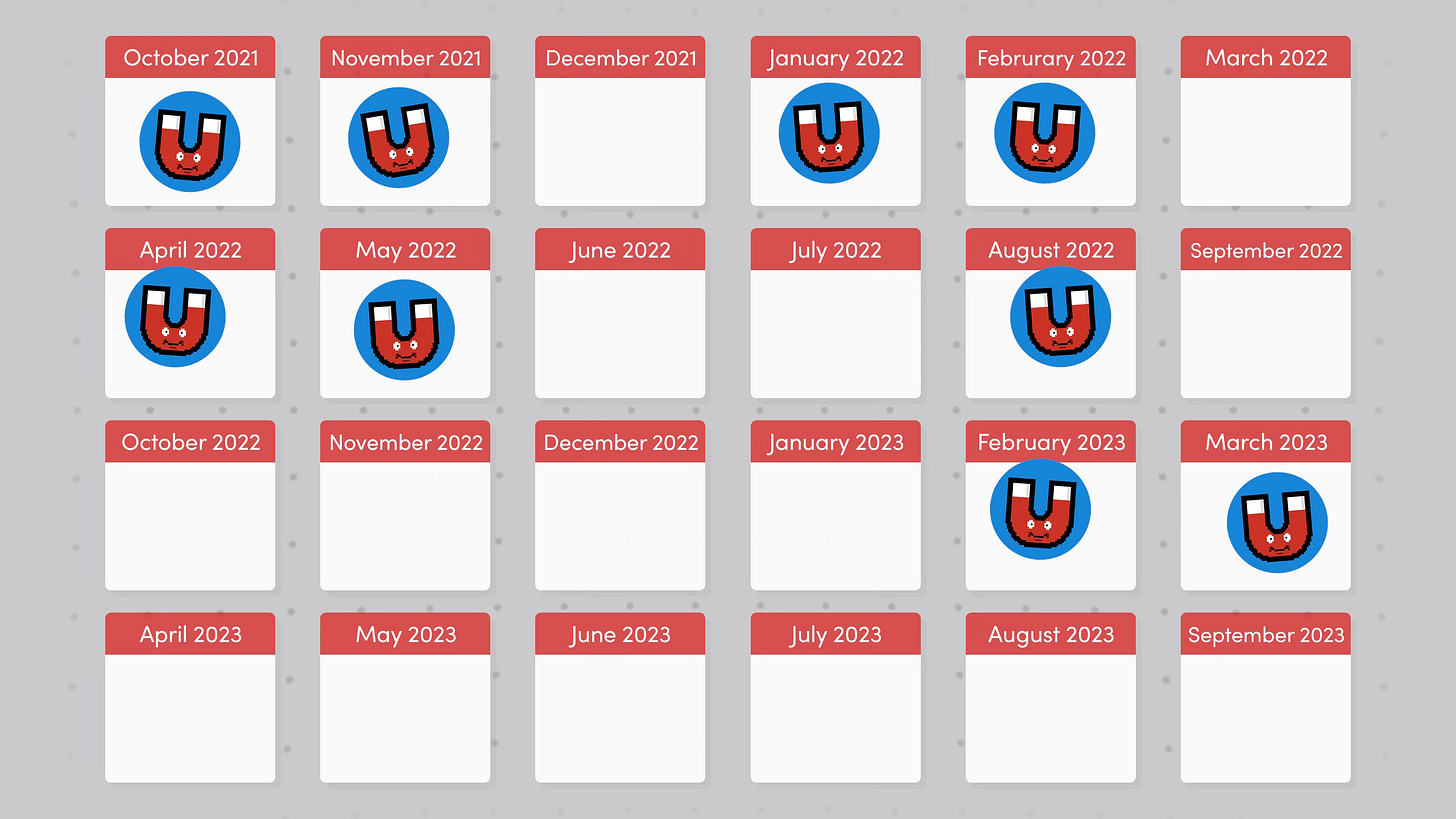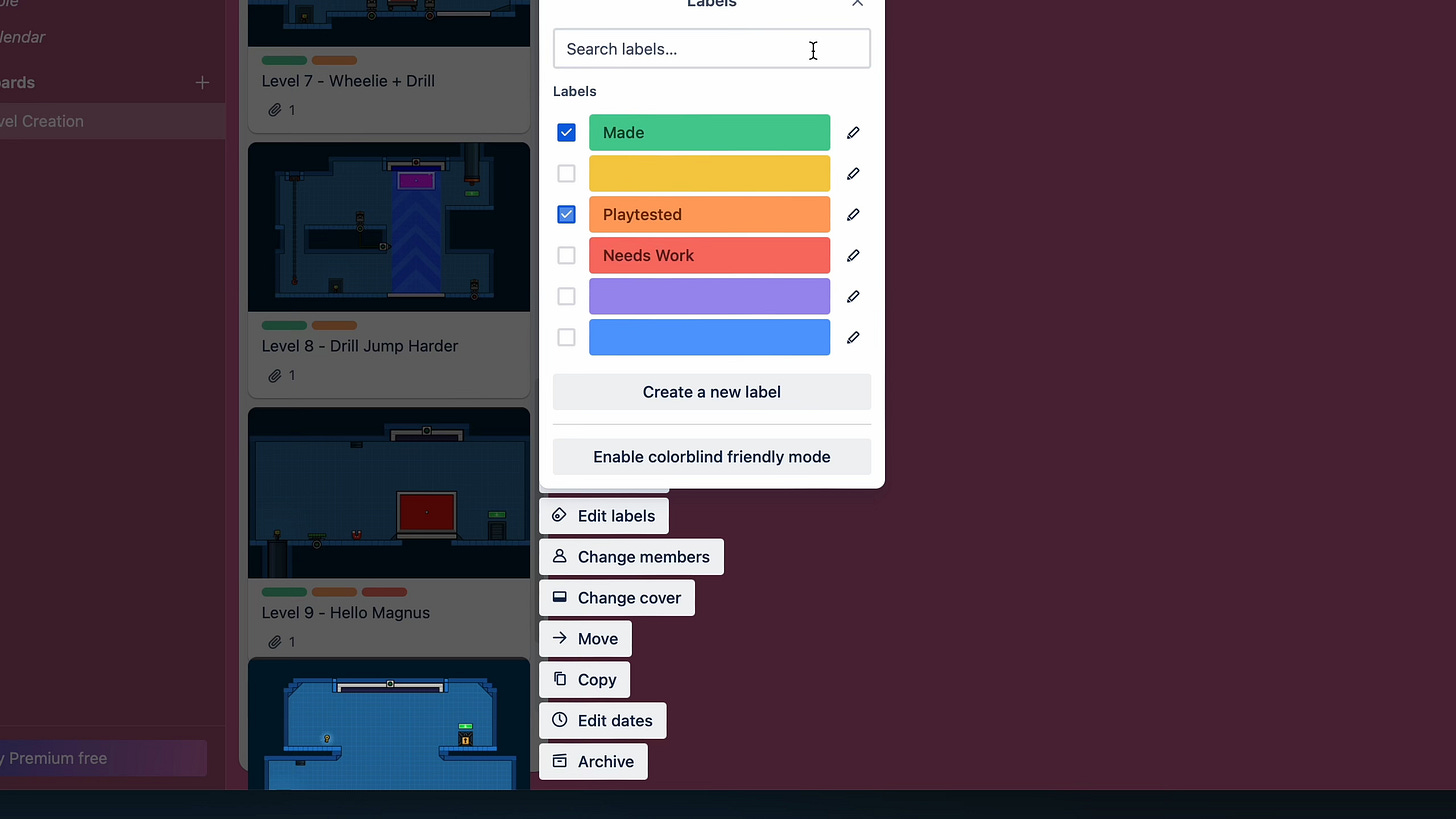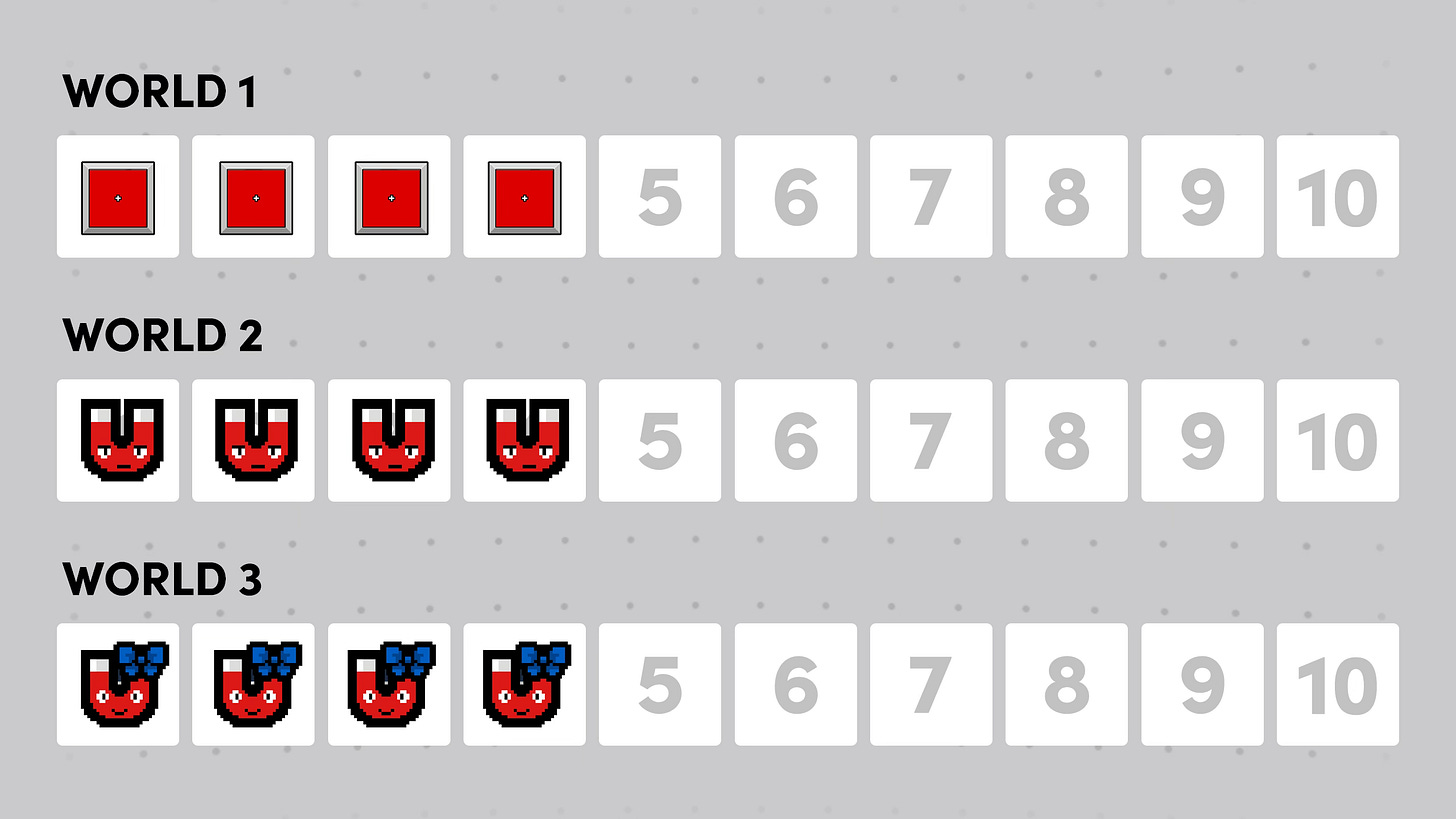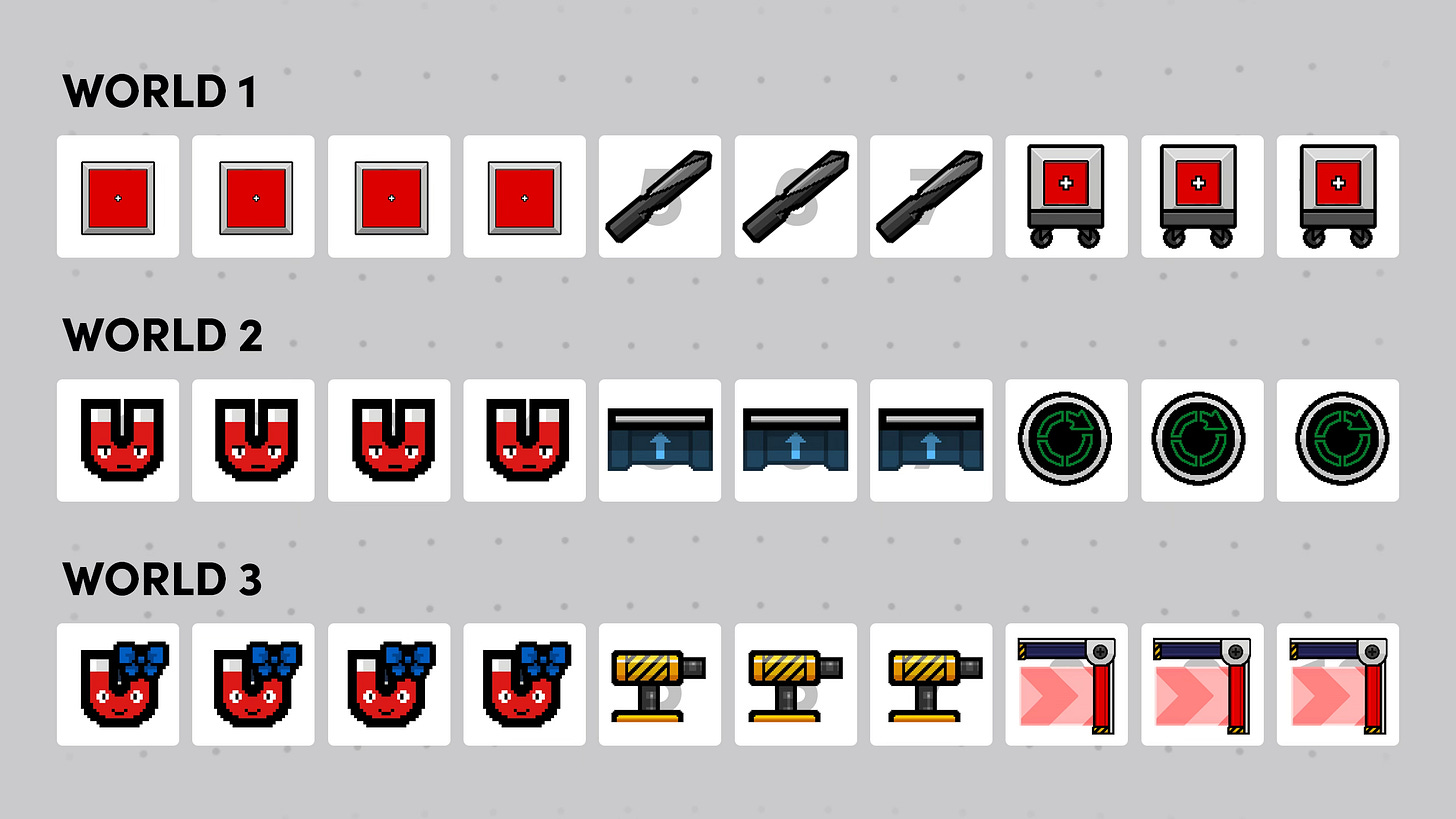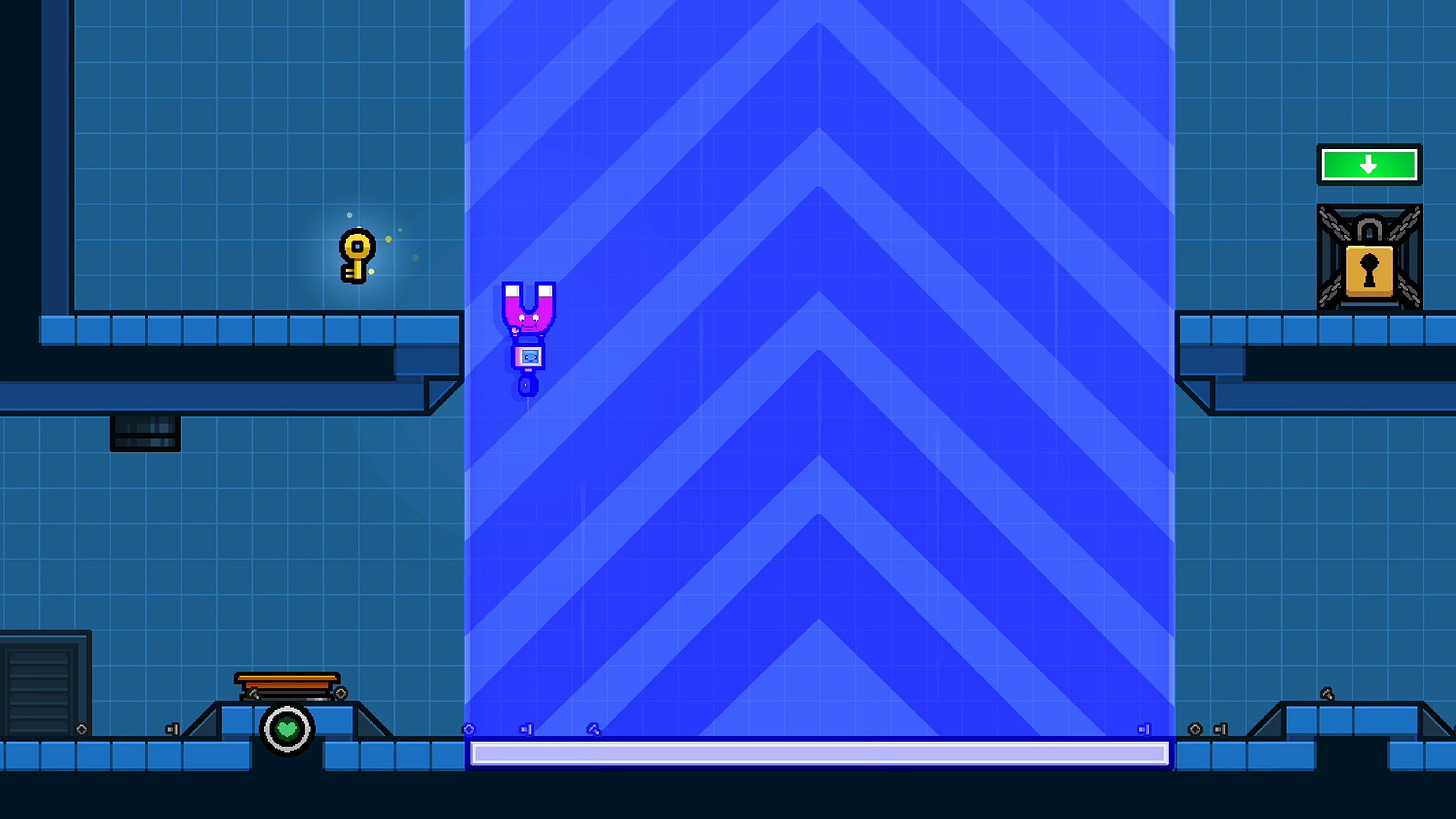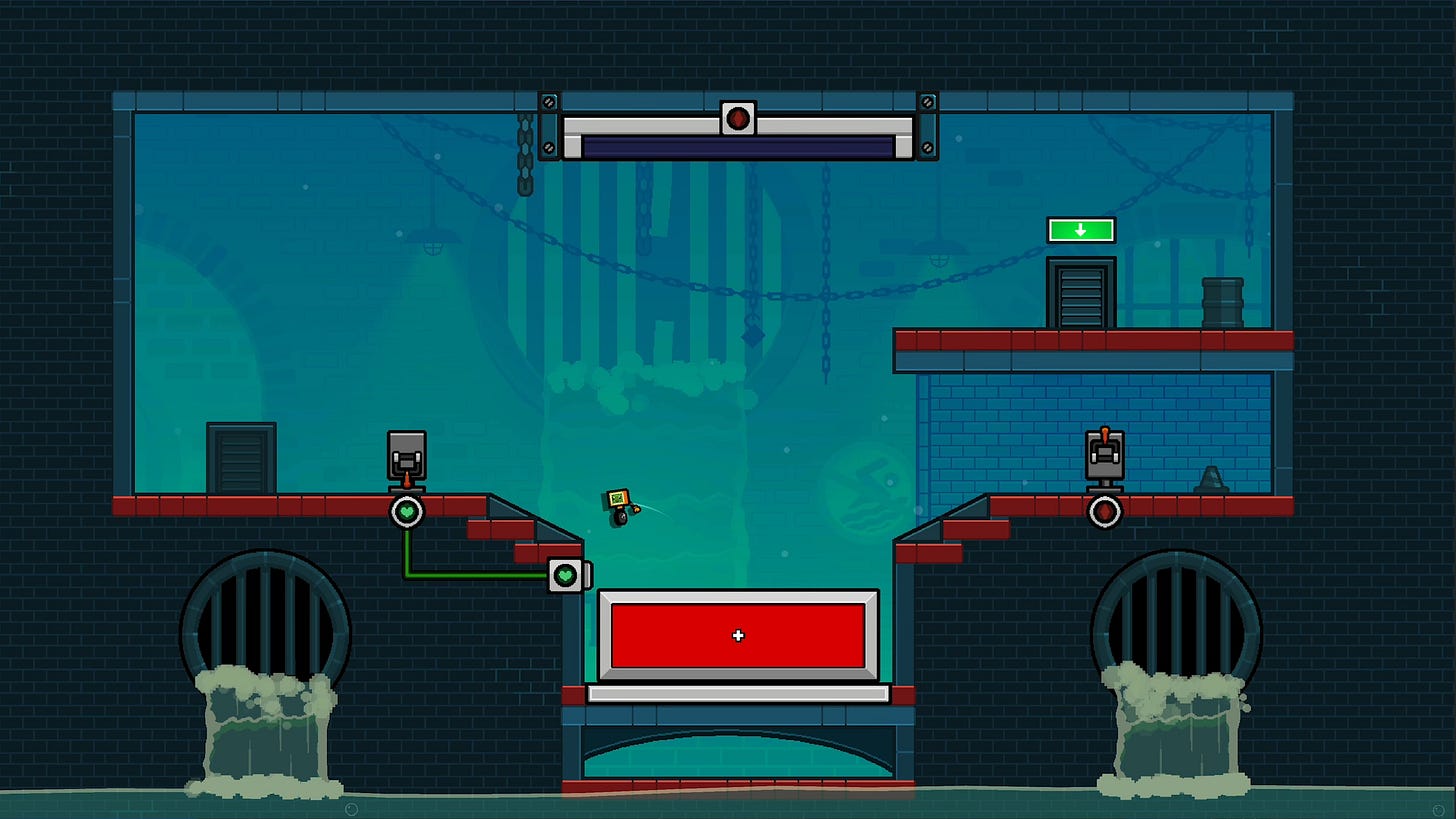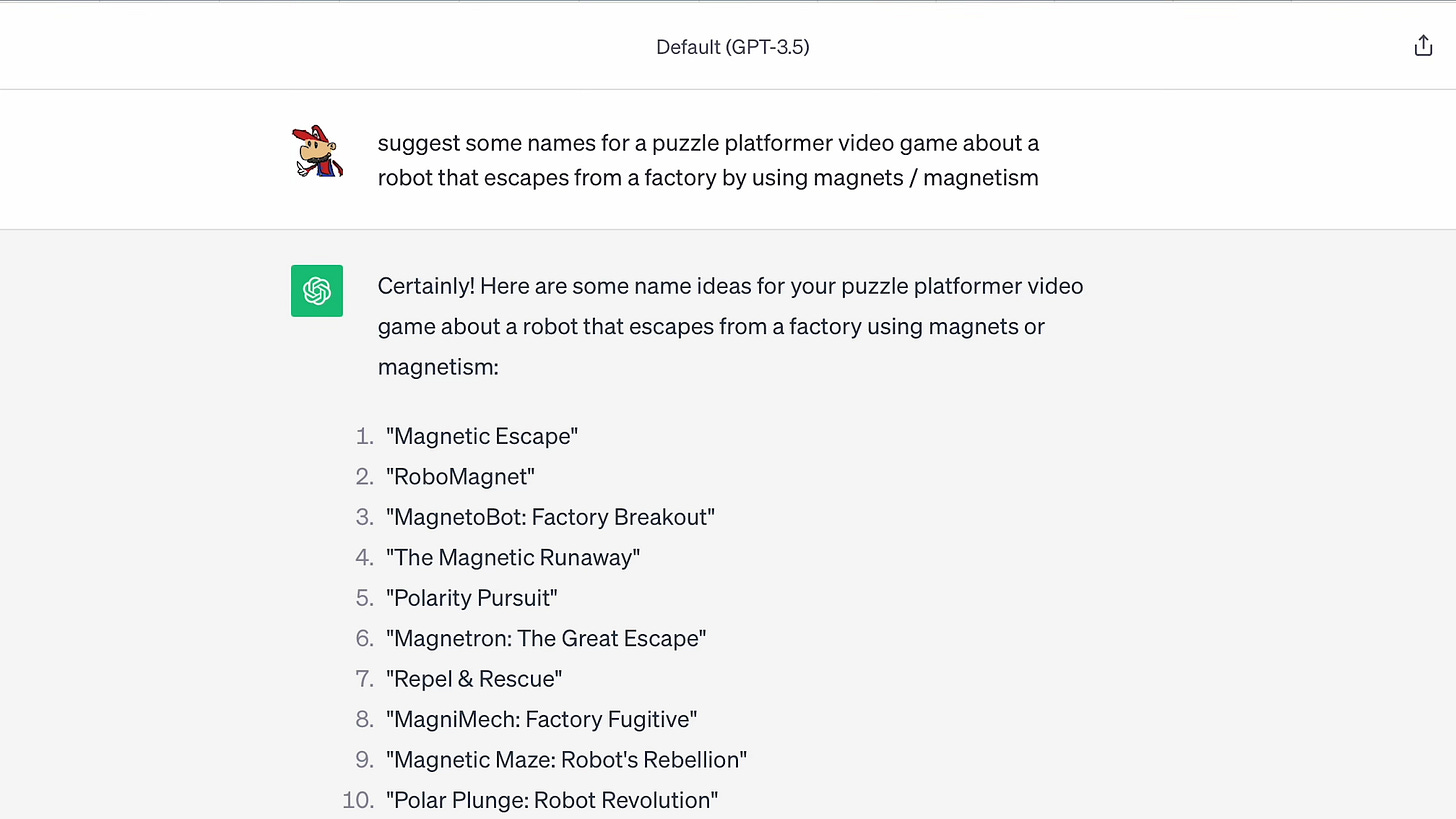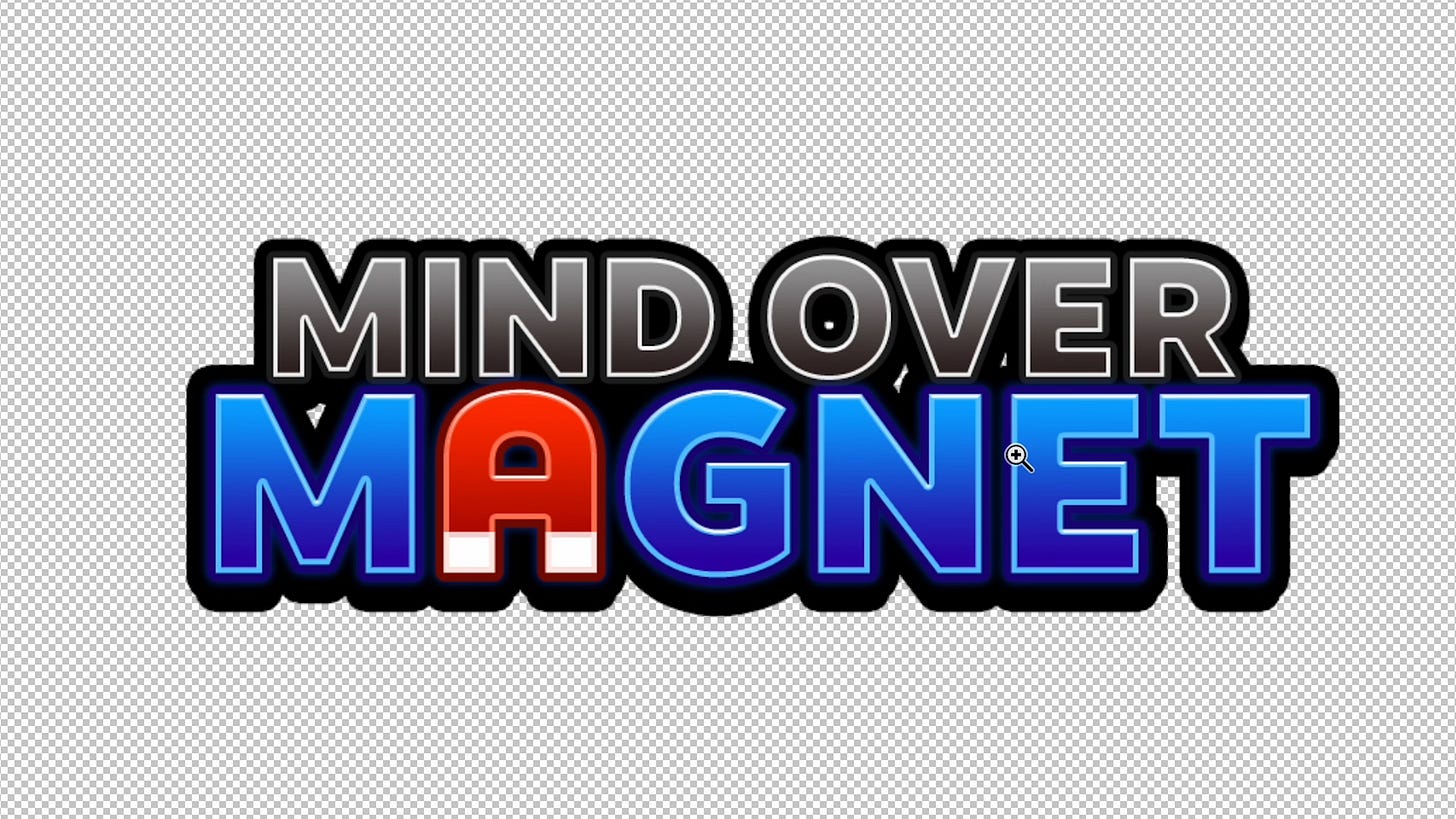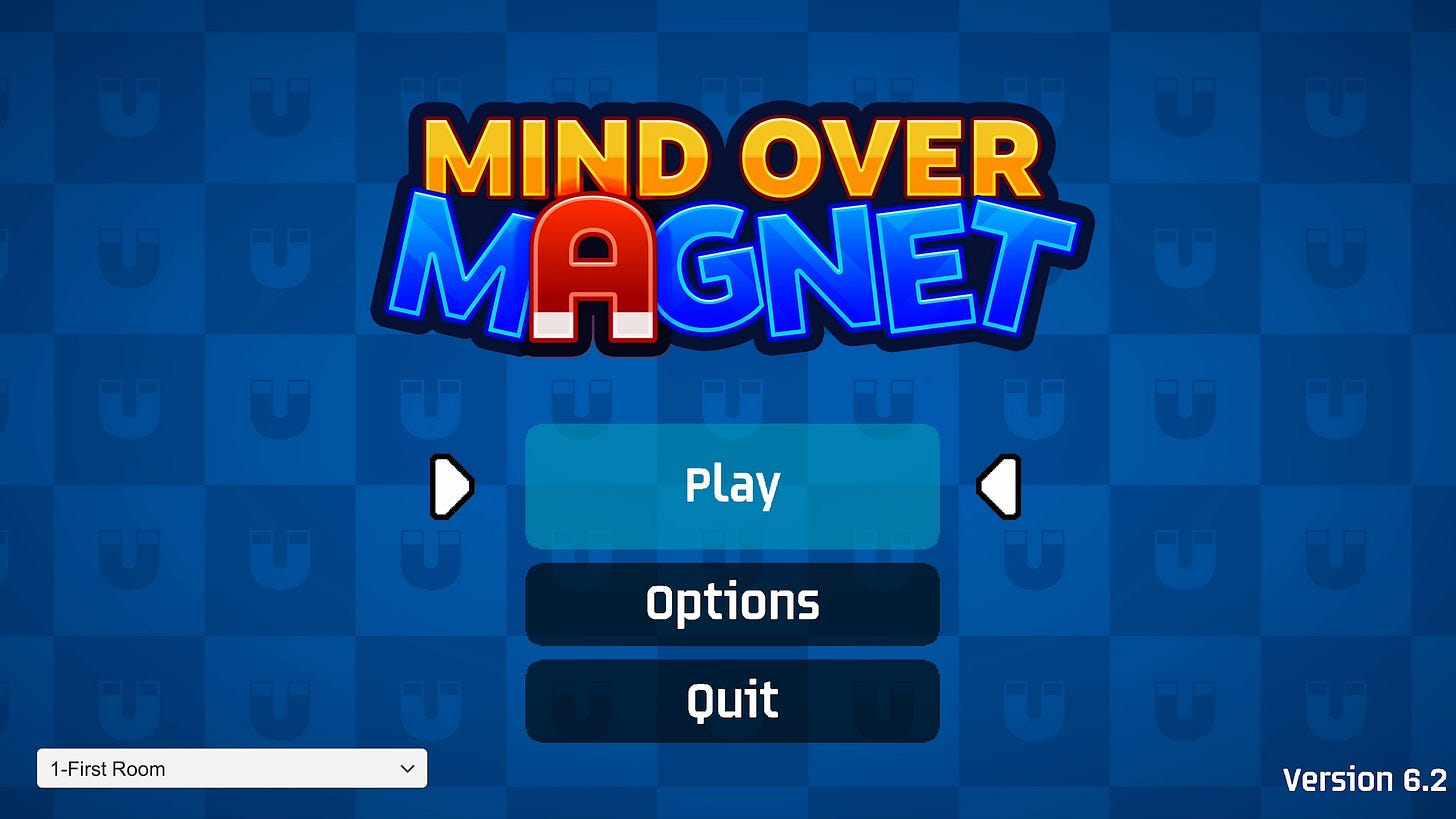Developing: The one thing you need to finish your game
I decide on a schedule, the scope, and a plan to finish my magnet game.
I am still making a video game about magnets.
In the previous episode of this series, back in March, I took my game, slapped it on a Steam Deck, and took it to the Game Developers Conference in San Francisco where I got loads of amazing feedback from other game designers.
They gave me ideas and suggestions for where to take the game next. Then, I flew home and… didn't work on the game for 6 months straight.
And this is not the first time that I've taken a massive break from game development. Remember when I released a video about how I was super inspired to get off my butt and finish the game… and then didn't work on the game for 5 months straight?
In fact, I've looked at the calendar, and while the game has been in development for about 24 months, I've only actually worked on it for about nine of those months.
So, if I do ever want to finish this game, something has got to change.
So I think one of the biggest problems surrounding my crappy output has been that I've struggled to juggle game dev and YouTube work.
I've never wanted Game Maker’s Toolkit to vanish and die during this development process. (Besides, YouTube and Patreon are literally paying the production budget for this game). So, I've tried to maintain a relatively normal upload schedule throughout the process.
But that means that whenever I make a bit of progress on the game, I have to down tools, change gears, and go make videos for a while. And the longer I spend making videos, the harder it is to get back into game dev.
Now luckily, that's a reasonably easy thing to fix. I can just change my schedule.
So going forward for the next few months, as I try to finish this game, I'm going to put all of my focus and energy into game dev and let the YouTube channel go more or less onto the back burner for a while.
If I do make videos about other games that don't have magnets in them(!?), I'll try not to stay away for so long that it becomes impossibly daunting to get back into the game.
That should hopefully help, but I don't think it's going to fix the fundamental root cause of the problem.
Because even when I do work on the game, I don't feel like I'm making a lot of forward progress. I'm just kind of aimlessly noodling around, hoping that the game will eventually just coalesce by itself into a finished game. Sometime, presumably, within the next one or two decades.
And the reason is because I don't really have… a plan.
There is no concrete list of tasks and actions I need to do in order to bring this game to completion. It is all just a bunch of random ideas in my head.
And look, when you first start working on a game, I think it's vitally important to avoid planning as much as possible. You want that freedom and leeway to experiment and innovate and just play around. You don't want a detailed design document luring over your head stifling your creativity.
But once you've made your prototype and figured out what makes your game fun, if you want all of those disparate elements to come together and make their way into a finished game that you can put on Steam and sell to people, then… you're going to need to make a plan.
Whether that's on a whiteboard or it's in a notepad or it's a design document or, in my case, a Trello board - whatever the case, it's something that tells you what is going to be in this game and crucially by extension what's not going to be in this game. And it also gives you a list of tasks and objectives to carry out that will get the game to the finish line.
The funny thing is that I did one of these for my interactive video essay thing, Platformer Toolkit, and it was an essential tool for getting that game finished within a reasonable time period.
Not 100% sure why I've never done it for this magnet game, but enough is enough. Better late than never. Let’s make a plan!
So I started by making a really high-level overview of all the main objectives I need to do in order to finish this game. Everything from giving the game a name to building all of the levels to writing all of the story and to creating a Steam store page.
Then as I started on each one of these tasks, I would create a more specific sub-plan giving me detailed instructions for how to finish that thing.
Take level design, for instance. So far, my plan, if you can call it that, for level design has been to make a bunch of levels, which is not very specific. How many levels is that, and how many worlds does that go into. And when am I introducing all of the main mechanics?
So this time I have a plan. I came up with 50 levels across five worlds. So that's 10 levels per world.
That is not going to be an enormous game. In this context, a level is a single screen puzzle chamber that you can finish in 2 or 3 minutes. But a huge part of doing this plan is deciding on the game's scope. How big is this game going to be? And considering my schedule and output so far, I think it's a good idea to be as conservative as possible if I want this game to ever go out of the door.
I'll focus on the first three worlds for this post. So in each world, it's going to revolve around a different type of magnet. World one has no magnets, so it's just big magnetic blocks. Then world two is about Max, the simple magnet that you can throw around the room. And then world three is about Maggie and Meg, which is like one magnet but can switch between two different sisters as you change its polarity.
For each one of these magnets, I'll need a few levels to introduce them to the player and teach them the most basic abilities. So let's give them four levels each for that.
And then there's all the mechanics I made, like the moving drill bit, the block on wheels, the one-way platform, the laser beam, the switch that resets itself after a few seconds, and the scissor gate.
Each one of those will need a level as a tutorial to teach you how it works. Then an actual puzzle to solve. And then another level: perhaps a harder puzzle or a level that subverts the mechanic in an interesting way or a level that pairs the mechanic up with another mechanic elsewhere in the game as per the puzzle matrix I explored in episode 9.
So if each mechanic has three levels each… if I put that on my plan… woah! I've basically filled out the entire game. I’ve just got to make the levels now.
But this is something I can actually do. It made level design so much easier because each level now has a clear goal and purpose to strive for. And so this, along with all of the lessons I've been learning in the previous videos in this series, allowed me to bang out sometimes four or five levels in a single day.
And within the space of about a month, I had made around 40 final levels for the game. Not to mention the 100 drafts that will never see the light of day.
Now, of course, the plan did change slightly as things went along.
For starters, I realised that it was a bit weird to have so many levels, relatively speaking, with no magnet whatsoever. The magnet is the entire point of the game! That would be like playing Portal and there being 10 levels before you get the portal gun.
So, to counter this, I decided to introduce the magnet partway into world one.
Also, it's a bit of a jump to go from having no magnet whatsoever to having a magnet that you can pick up, put down, ride up a magnetic field, and throw around the room using a somewhat complicated aiming trajectory system.
So, I decided to move Max, the throwable magnet, into world three. And then take Magnus, the mighty magnet who I briefly showed off in episode 8, and reimagine him as the first magnet in the game. He's big and heavy, so it makes sense that you can't throw him, meaning that I can delay teaching that mechanic until world three.
He also travels up magnetic fields slower than Max, which is a nice way of easing players into that novel game mechanic.
The plan also slightly changed based on playtesting and feedback. Throughout this level design sprint, I would often give the current crop of levels to friends, family members, Twitter randos, and fellow puzzle game designers to get some feedback.
Sometimes those ideas would inspire me to change the game slightly - or inspire entirely new levels.
So sometimes the worlds would balloon beyond 10 levels, and then I'd have to put more levels in the other worlds to balance things out. And you could see this getting out of hand. But luckily, I caught it early and kept the game within a reasonable scope.
But I think this is okay. The plan has proved massively useful, but I still need a bit of leeway to change things based on feedback or discoveries during development. Besides, I think there's a big difference between slightly altering a plan and just randomly aimlessly noodling around in the dark.
Now I wasn't able to finish all of the levels during this development sprint. I've still got a few more I need to make and then sprinkle throughout the campaign. I've got loads more playtesting to do on the levels I have made. And I need to make the entire final last world.
But I have made a big dent.
Plus, I can take a break because I know exactly what to do when I get back because of… the plan.
And a break is ultimately what I needed. But that's another cool thing about the plan.
When you get burnt out on doing one type of game development like super cerebral level design stuff, you can look at the plan and find something else to do that will tickle your brain in a slightly different way.
Like making some nice pretty pictures.Now I know exactly how many worlds will be in this game, I was able to do some of the background art for these levels.
I'll talk more about making the game pretty in a future episode, but for now, these new backgrounds allowed me to make some nice screenshots that show what the game will look like when it's finally done.
And also make some nice animated gifs for marketing.
Okay, so this is going pretty well. What else is on the list? Uh, oh yeah, this is a big one—give the game a name.
For the longest time, like two or more years of development, this game has simply been called Untitled Magnet Game.
It can't be that because that joke's already been done (honk!), and I also want a clever catchy name that sums up what this game is all about.
So I had a good long think and came up with… a load of really terrible names that I will never use. ChatGPT wasn't much better. I mean, MagniMech: Factory Fugitive? Mate? Are you having a laugh?
The best name, in the end, came from a friend. The Gaming Brit on YouTube casually suggested Mind Over Magnet, and I was like… damn, that's pretty good, actually. It's clever, it's catchy, and it instantly tells you that this is a puzzle game about magnets.
I literally can't think of anything better, so that is the name of this game.
Now, a good name needs a good logo, so I threw the words Mind Over Magnet into Photoshop and started playing around with layouts and fonts and colours. I knew I wanted the magnet in the logo somewhere and realised that I could just replace the 'a' with a magnet.
I like how the rounded corners of the magnet contrast nicely against the harsh edges and corners of the other letters.
This is what I came up with.
Then I put it in the GMTK Discord to get some feedback and ideas. The best piece of feedback or the best idea I saw was to have the other letters be attracted towards the magnetic 'a'. It looks really cool and sells the concept even more.
And so, this is the final logo for the game.
So now I have a name, a logo, some screenshots, some animated gifs, and a pretty good idea of how much game there is going to be in this game. Which means I have all of the ingredients needed to finally make the Steam store page.
Yes, it's been a very long time coming.
Conventional wisdom suggests that you should make your Steam store page as early as possible so you can build up those all-important wish lists on your game. But, uh, better late than never.
Now, as it turns out, it's a lot harder to get your game on Steam than something like Itch.io. Itch just needs your bank details and then lets you upload whatever you want. Steam has a lot of checks in place to make sure you are a legitimate business, and you're not flooding their store with absolute junk.
Well, that's the idea at least.
Now, in terms of getting a Steamworks account, I had to fill out a huge questionnaire with loads of details. I had to pay Valve $100. And I had to get a certificate from the UK government to prove that I am a legitimate business.
And then, in order to get your store page online, you've got to go through a huge checklist of things. You've got to write the description, set all of the tags, set the minimum system requirements, upload five different screenshots, make loads of different banner arts and capsule art and stuff like that.
And you have to set a release date, though you don't have to show that to the public. So my page just says 2024.
It's not the most detailed Steam page in the world. It doesn't have a trailer or anything like that. But it is at least live, which is a commitment that this game will be finished—a $100 commitment. And it also means that you can now go and wishlist the game.
Phew!
I feel like I've achieved more in this one month of development than I have at any other point during the process. And I put that largely down to the plan.
Now, as I was talking about before, you have to find the right time to make your plan. If you do it too early, you risk compromising the opportunity to be creative and inventive. But if you do it too late, like I have, it means the game development just ends up taking way longer than it ever should have.
But it is now done. I have a plan. I have a concrete set of tasks to complete in order to get this game done. It means every game dev session has purpose, and it means I have more motivation and drive to get this game done.
Thank you so much for reading, and I'll see you again, hopefully, quite soon.

